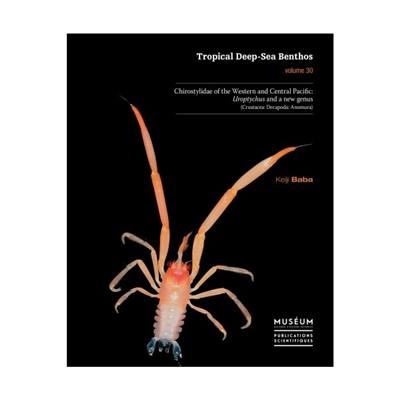
Serie : Tropical deep-sea benthos. Vol 30
Collection(s) : Mémoires du Muséum national d'histoire naturelle
Paru le 14/09/2018 | Relié 612 pages
Professionnels
Tropical Deep-Sea Benthos, a continuation of Résultats des Campagnes Musorstom, is a series dedicated to the inventory and description of the deep-sea fauna of the world, with special emphasis on the most extensive, yet remote and least explored, region - the Indo-West Pacific.
The comprehensive series of marine expeditions undertaken by the French Muséum national d'Histoire naturelle and the Institut de Recherche pour le Développement (IRD) continue to collect many new, strange and sometimes colourful invertebrates.
Among chirostylid squat lobsters of the anomuran Crustacea, the genus Uroptychus is most speciose. The majority of species are common in deep-waters, usually found associated with soft corals, black corals, rarely with sea pens and crinoids. This paper deals with a huge amount of material assembled by numerous French cruises to the western and central Pacific. One hundred fifty species are reported from this region, including 106 new species, six of which are placed in a new genus Heteroptychus. Now more than 50 percent of Indo- West Pacific species occur in New Caledonia and vicinity, demonstrating high species richness in this region.
Keiji Baba, professor emeritus at Kumamoto University, Japan, has been working with decapod crustaceans, focusing on the taxonomy of his favorite squat lobsters. He has also worked on stenopodideans and larval development of crabs and hermit crabs.